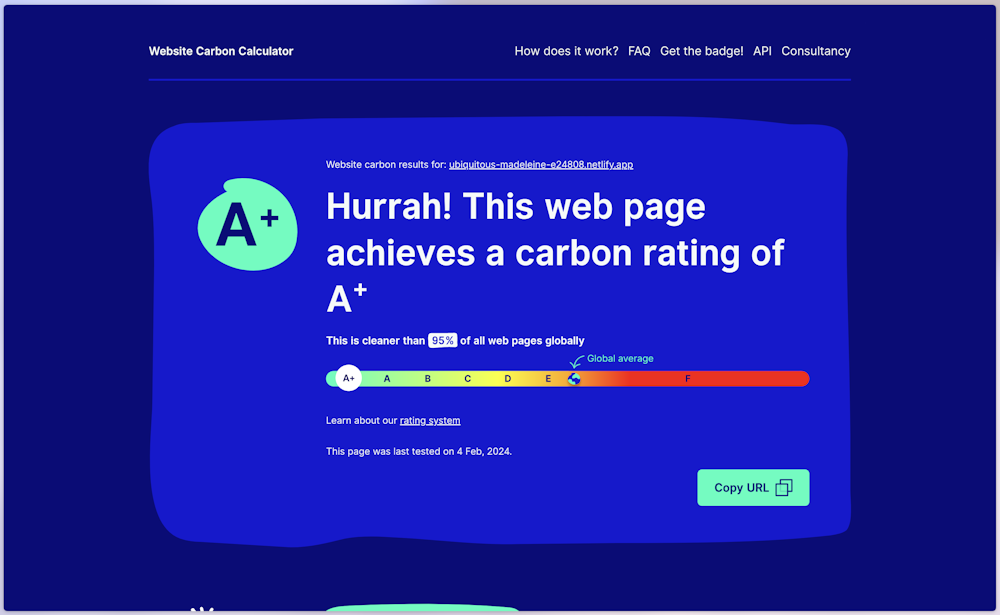
From Website Carbon Calculator:
Globally, the average web page produces approximately 0.8 grams CO2 equivalent per pageview. For a website with 10,000 monthly page views, that’s 102 kg CO2e per year.
This is what the calculator told me about my previous portfolio page:
eleni.codes produces 169.41kg of CO2 equivalent or 442 kWh of energyI learned React in the height of its era, when you were either building front ends with React or not at all. It provided a more intuitive and flexible way to create applications vs HTML and vanilla javascript, and helped me to build a lot of fun things. But like all things created by Big Tech companies, regardless of what they open source, I always would rather another option. Astro kept coming up for me, whether on a podcast or when filling out the last State of Javascript survey, so I decided to work with it for my portolio project update. I loved to learn about the islands architecture, and learning that there are people out there coming up with new ways of doing things. Everything doesn’t have to be React 🙌🏼.